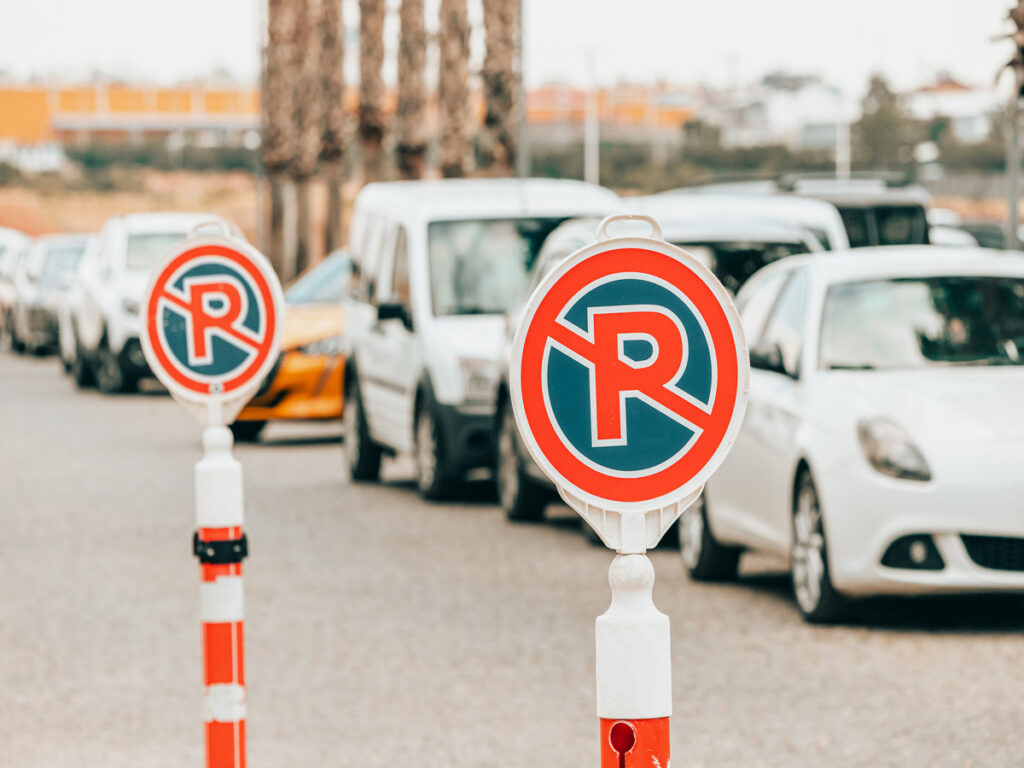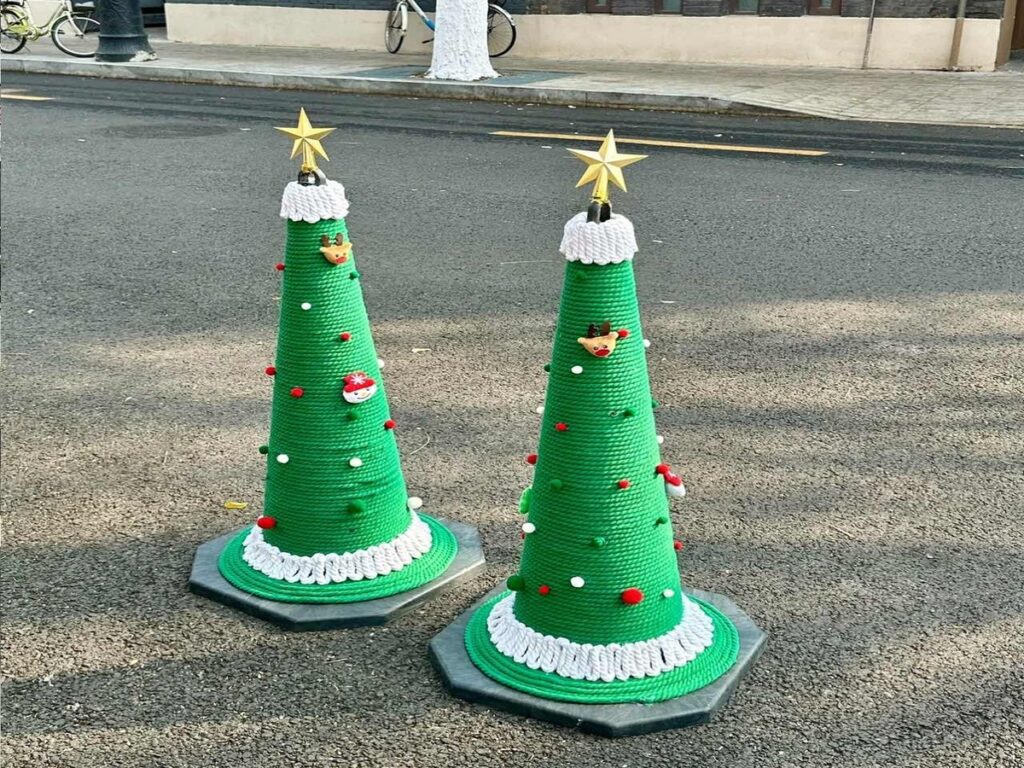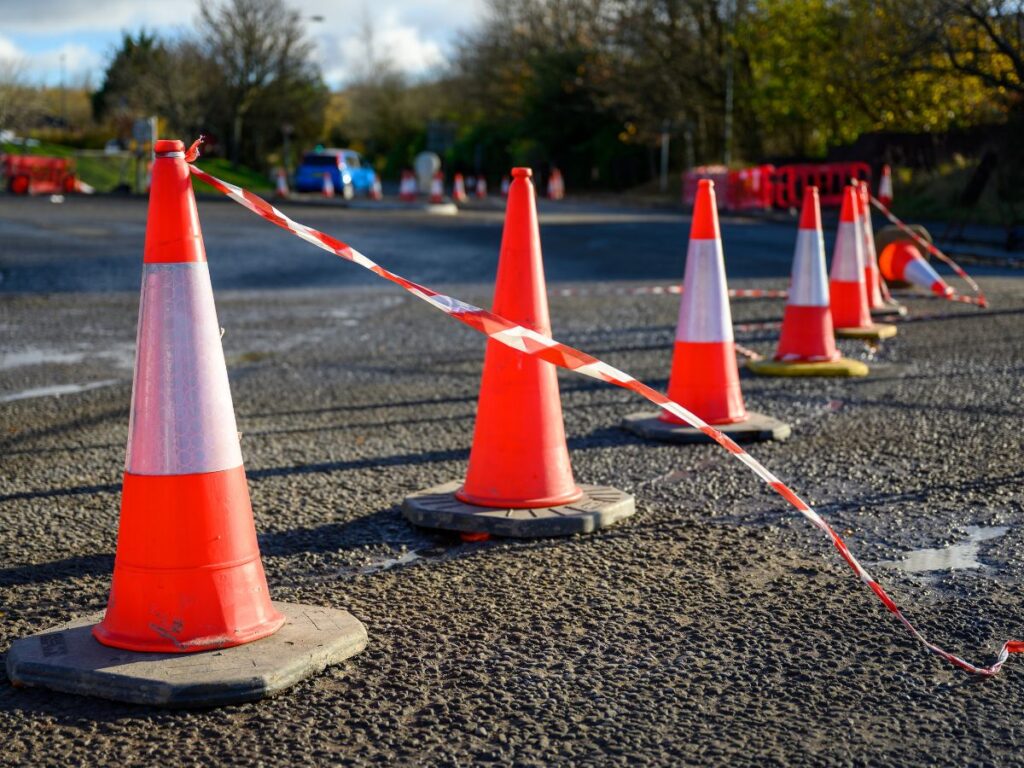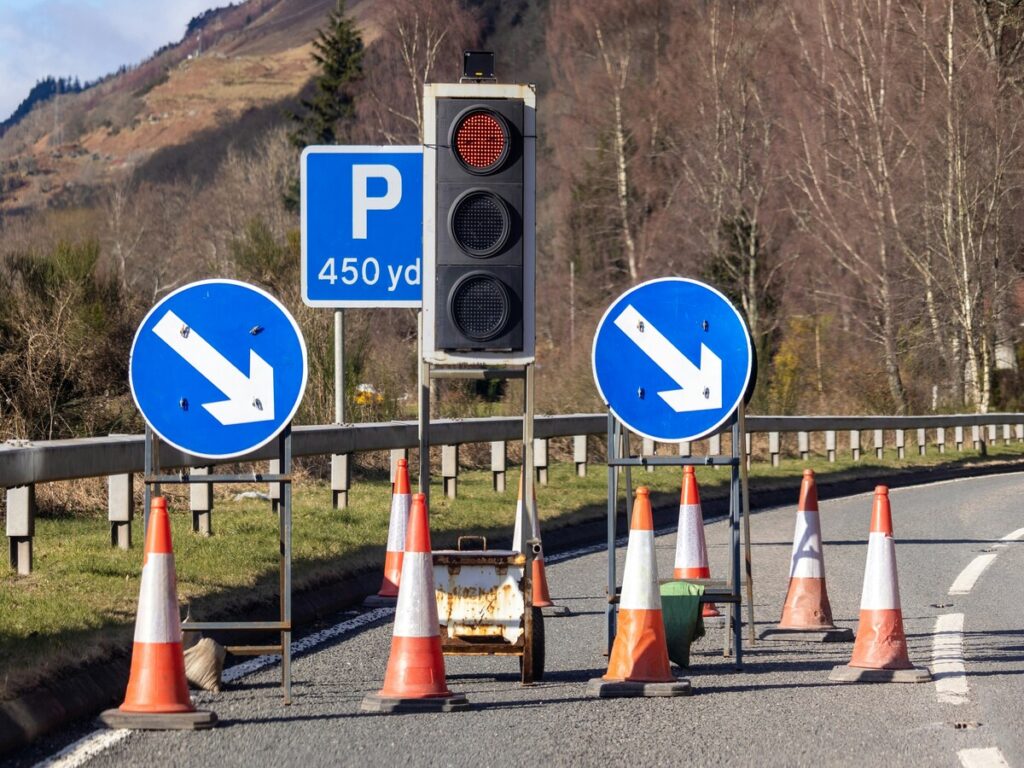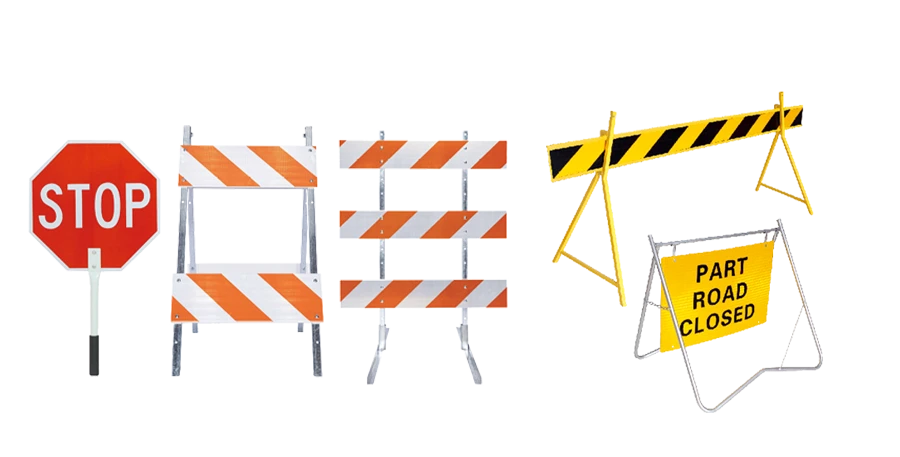
IL Manuale sui dispositivi di controllo del traffico uniforme (MUTCD) Section 3B.11 plays a vital role in regulating raised reflective pavement markers. Questi indicatori migliorano la visibilità e migliorano la sicurezza del traffico guidando i conducenti, soprattutto di notte o in caso di tempo avverso. Gli studi dimostrano che i segnali riflettenti sulla pavimentazione possono ridurre gli incidenti notturni fino a 30%, poiché rimangono altamente visibili anche in caso di pioggia o polvere. Il colore coerente tra gli indicatori garantisce che i conducenti possano riconoscere rapidamente i confini della corsia e le curve stradali, riducendo i rischi. Uniformità nei dispositivi di controllo del traffico, compresi i colori, migliora l’efficienza dei sistemi di trasporto e aumenta la sicurezza generale.
By understanding and meeting these requirements, Segni OPT ensures that its products provide clear, reliable guidance for drivers, especially in critical low-visibility situations. OPTsigns stands committed to supporting both industry standards and customer needs, providing high-quality raised pavement markers that are as effective as they are essential for road safety.
Takeaway chiave
- Raised road markers help drivers see better and lower crashes by 30%.
- Same marker colors let drivers easily spot lanes and edges, rendere le strade più sicure.
- Special materials like tiny glass beads make markers shine in the dark.
- Sunlight and weather can weaken markers, but new coatings keep them clear.
- Following MUTCD rules keeps markers useful and protects road managers from risks.
The Science of Raised Reflective Pavement Markers

Materiali e design
Common materials used in raised reflective pavement markers
The materials used in raised reflective pavement markers are carefully selected to meet the demands of different road conditions. Here’s a breakdown of the most common materials and their applications:
| Materiale | Caratteristiche | Caso d'uso |
|---|---|---|
| Ceramic | Alta durata | Heavy traffic areas |
| Plastica | Leggero | Temporary use or low traffic |
| Metallo | Resilient to snow | Areas with heavy snowfall or plowing |
| Tactile | Provides feedback | Assists visually impaired drivers |
Ogni materiale offre vantaggi unici. Per esempio, ceramic markers withstand heavy wear, while metal markers resist damage from snowplows. Plastic markers are ideal for temporary installations due to their lightweight nature.
How design features improve durability and visibility
The design of raised reflective pavement markers plays a critical role in their effectiveness. Materiali durevoli come ceramic and metal ensure the markers can endure harsh conditions, such as heavy traffic or extreme weather. Visibility improves through the integration of retroreflective elements, such as glass beads or prismatic sheeting. These features make the markers appear brighter when illuminated by headlights, helping you navigate roads safely at night or in poor weather.
Proprietà riflettenti
The role of retroreflective materials like glass beads and microprismatic sheeting
Retroreflective materials are essential for enhancing visibility. They work by reflecting light back toward its source, making the markers highly visible to drivers. Here are some key features of these materials:
- Microprismatic sheeting provides higher brightness and reflectivity compared to glass beads.
- It is durable and resistant to environmental wear, rendendolo adatto per uso esterno.
- Glass beads reflect light in all directions due to their smooth, rounded surfaces.
- Microprismatic sheeting focuses light reflection, improving visibility in the direction of oncoming vehicles.
These properties ensure that raised reflective pavement markers remain effective in low-light conditions, guiding you safely through the road.
How light reflection enhances nighttime visibility
Reflective materials enhance nighttime visibility by utilizing retroreflection. This optical effect directs light from vehicle headlights back toward the driver, making road markings and markers easier to see. The embedded glass beads or prismatic sheeting in these markers improve their brightness, anche in condizioni difficili come pioggia o nebbia. This increased visibility helps you react faster to road layouts, reducing the risk of accidents and improving traffic safety.
Importance of Color Consistency in Raised Reflective Pavement Markers
The Role of Color in Traffic Safety
How color helps drivers identify lanes, confini, and road directions
Color plays a crucial role in helping you navigate roads safely. Raised reflective pavement markers use specific colors to define lanes, confini, and road directions. These markers enhance visibility, soprattutto di notte, when traditional painted lines may fade or become obscured. Their reflective materials ensure you can see them from a distance, keeping you aware of lane boundaries and road curves.
- White lighting LED studs make curves appear less risky and more pleasant to drivers.
- Drivers adjust their trajectories toward the center of the road when approaching curves marked with white lighting, improving lane identification.
Fornendo segnali visivi chiari, these markers contribute significantly to traffic safety, reducing confusion and helping you stay on course.
The psychological and cognitive impact of consistent color on driver reaction times
Consistent color also influences how you perceive and react to road conditions. A study found that curves marked with white LED studs felt less risky and more pleasant compared to red or unlit curves. This consistency in color positively impacts your perception, making challenging driving conditions feel less stressful. It may also improve your reaction times, as clear and predictable visual cues allow you to process information faster. This psychological effect enhances overall safety by helping you make quicker decisions on the road.
Achieving and Maintaining Color Consistency
Use of pigments and coatings to ensure uniform color
Manufacturers use high-quality pigments and durable coatings to maintain uniform color in raised reflective pavement markers. These coatings resist wear and tear, ensuring the markers retain their visibility over time. Advanced technologies in pigment application create vibrant and consistent colors that remain effective under various lighting conditions. This uniformity helps you quickly recognize road markings, improving traffic safety.
Environmental factors affecting color consistency (PER ESEMPIO., Esposizione ai raggi UV, tempo atmosferico)
Environmental conditions can impact the color consistency of pavement markers. UV exposure causes fading, while heavy snowfall leads to abrasion. Application conditions, such as temperature and humidity, also affect the durability of the markings. Per esempio:
- High temperatures and surface moisture during installation can reduce the longevity of the color.
- Year-round climate changes, including wind and rain, influence the performance of the markers.
Nonostante queste sfide, advancements in materials and coatings help maintain the markers’ visibility and effectiveness, ensuring your safety on the road.
MUTCD Section 3B.11 Guidelines for Raised Reflective Pavement Markers
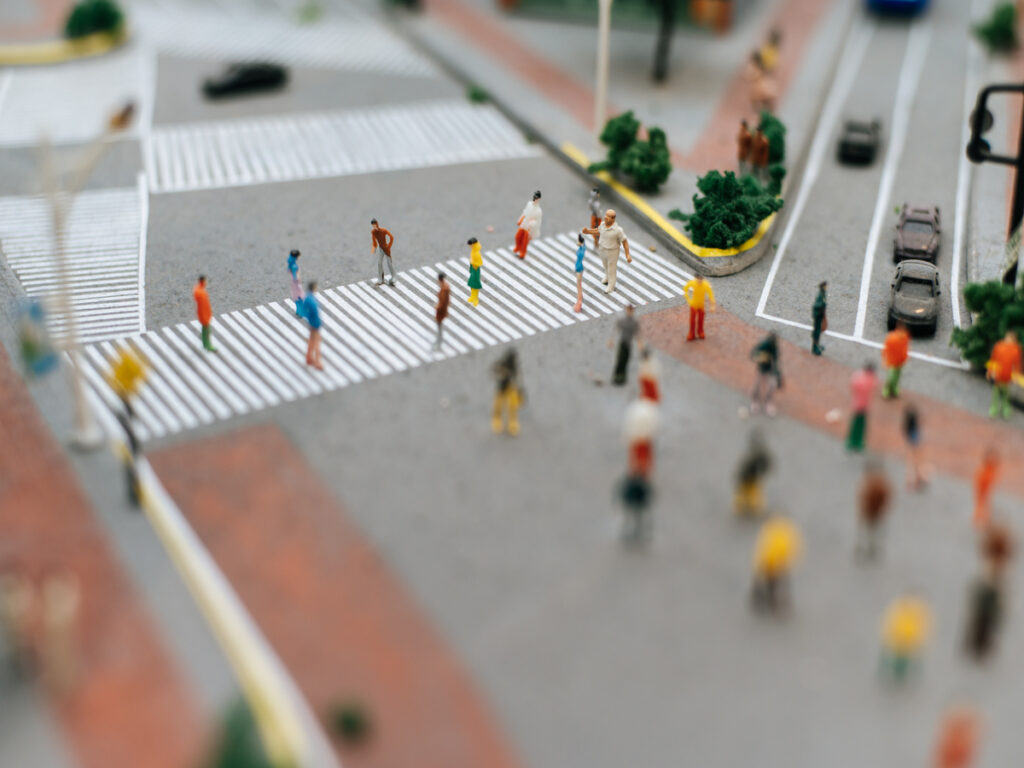
Requisiti chiave
Matching marker colors to road markings (PER ESEMPIO., bianco, giallo, rosso)
MUTCD Section 3B.11 emphasizes the importance of matching marker colors to road markings to ensure consistency and improve visibility. You’ll notice that white markers typically indicate lane separations in the same direction, while yellow markers highlight opposing traffic lanes or no-passing zones. Red markers often signal areas where entry is prohibited, such as wrong-way lanes. This alignment between marker colors and road markings helps you quickly interpret road layouts, enhancing traffic safety.
Standards for different marker colors and their applications
Each marker color serves a specific purpose, and MUTCD standards ensure their proper application. Per esempio:
- Fluorescent yellow and yellow-green markers meet retroreflectivity levels for yellow signs, making them ideal for warning zones.
- Fluorescent orange markers align with the retroreflectivity of orange signs, often used in construction areas.
- White-on-red markers and red-on-white markers follow similar treatment unless otherwise specified.
Markers like blue and brown, though not explicitly covered in the standards, can still be monitored for retroreflectivity by agencies. These standards ensure raised reflective pavement markers perform effectively across various roadway conditions.
Conformità e applicazione
How agencies ensure adherence to MUTCD standards
Agencies play a critical role in maintaining compliance with MUTCD standards. They establish compliance periods to ensure pavement markings, including reflective road marking systems, meet retroreflectivity requirements. A suggested compliance period of four years allows agencies to implement methods for maintaining marker performance. Agencies also set schedules for replacing deficient markers based on available resources and priorities. These measures ensure that raised reflective pavement markers remain visible and effective over time.
Consequences of non-compliance for road safety
Non-compliance with MUTCD standards can have serious consequences.
“Il MUTCD è la legge che regola tutti i dispositivi di controllo del traffico. Il mancato rispetto del MUTCD alla fine può comportare la perdita dei fondi per gli aiuti federali e un aumento significativo della responsabilità per illeciti civili”.
Failing to follow these guidelines exposes road authorities to liability if accidents occur. Ad esempio, an inappropriate or missing traffic control device can be directly linked to a crash, implicating the responsible parties. Adhering to MUTCD standards reduces liability risks and ensures the safety of all road users.
Challenges and Innovations in Raised Reflective Pavement Markers
Current Challenges
Maintaining color consistency over time due to wear and tear
Raised reflective pavement markers face challenges in maintaining their color consistency. Col tempo, environmental factors like UV exposure and abrasion from heavy traffic degrade their appearance. Intense ultraviolet rays cause fading, while snowplows and debris lead to surface damage. Weather conditions during installation, such as high humidity or surface moisture, can also affect their long-term performance. These issues reduce the markers’ ability to provide clear visual cues, impacting their effectiveness in ensuring safety.
Impact of varying lighting and weather conditions on visibility
Visibility under adverse conditions remains a significant challenge for raised pavement markers. Wet nighttime conditions, Per esempio, diminish the retroreflective performance of traditional pavement markings. Tuttavia, raised reflective pavement markers offer a reliable solution by maintaining visibility even in rain or fog.
Under wet nighttime conditions, many traditional pavement markings lose much–if not all–of their retroreflective performance. Tuttavia, the traditional way to provide wet nighttime visibility is the use of RRPMs.
Despite this advantage, extreme weather like heavy snowfall or dense fog can still limit their effectiveness, requiring continuous innovation to enhance their performance.
Progressi tecnologici
Innovations in materials and coatings for durability and color retention
Advancements in materials and coatings have significantly improved the durability and color retention of raised pavement markers. These innovations ensure consistent performance across various conditions.
| Tipo di innovazione | Caratteristiche chiave |
|---|---|
| Nano-Coatings | Self-cleaning properties, improved adhesion, resistenza all'usura. |
| Smart Road Markings | Thermochromic paints, dynamic LEDs, connected infrastructure. |
| High-Performance Cold Plastic Markings | Advanced binders, customized formulations for specific environments. |
| Sustainable Marking Solutions | Use of recycled materials, low-emission paints, bio-based additives. |
These advancements not only enhance the markers’ luminescence performance but also contribute to sustainability by incorporating eco-friendly materials.
Development of active luminous road markings for enhanced visibility
Active luminous road markings represent a breakthrough in visibility evaluation and traffic safety. These markings use advanced technology to improve luminescence performance, soprattutto di notte.
- The luminous road marking coating uses advanced technology for high visibility.
- It contains a phosphorescent compound that absorbs sunlight and emits light at night.
- This innovation aims to reduce accidents and improve overall traffic safety.
Inoltre, various types of active luminous road markings have emerged:
| Tipo di avanzamento | Descrizione |
|---|---|
| Fluorescent Road Markings (FRMs) | Enhance visibility through fluorescence. |
| Persistent Phosphorescent Road Markings (PPRMs) | Absorb sunlight and emit light at night. |
| Electric Luminous Road Markings (ELRMs) | Use electric power for illumination. |
These advancements ensure that raised reflective pavement markers remain effective under adverse conditions, providing safer roads for all users.
MUTCD Section 3B.11 ensures raised reflective pavement markers meet strict standards for safety and effectiveness. These guidelines improve visibility and reduce risks, especially during nighttime or adverse weather. Advanced materials like thermoplastics and nanocomposite paints enhance durability and retroreflectivity, ensuring markings remain visible under challenging conditions. Consistent colors help you quickly recognize lanes and boundaries, improving traffic safety. Adhering to these standards reduces nighttime crashes and enhances driver awareness. Continued innovation in materials and coatings will further improve roadway safety, rendere le strade più sicure per tutti.
Domande frequenti
What makes raised reflective pavement markers visible at night?
Raised reflective pavement markers use retroreflective materials like glass beads or microprismatic sheeting. These materials reflect light from vehicle headlights back toward you. This luminescence ensures the raised pavement markers remain visible even in low-light conditions, helping you navigate roads safely.
How does color consistency improve traffic safety?
Consistent colors help you quickly identify lanes, confini, and road directions. This reduces confusion and improves reaction times. Research shows that predictable visual cues, like uniform marker colors, enhance your ability to process road information and make safer driving decisions.
Why is luminescence important for raised reflective pavement markers?
Luminescence ensures markers remain visible during nighttime or adverse weather. It enhances their effectiveness by reflecting light back to you. Research into advanced materials has improved luminescence, making these raised pavement markers reliable for guiding you through challenging driving conditions.
How do environmental factors affect marker performance?
Esposizione ai raggi UV, traffico intenso, and weather conditions like rain or snow can degrade marker visibility. Research into durable coatings and materials has helped maintain luminescence and color consistency, ensuring raised pavement markers perform well over time despite environmental challenges.
What innovations are improving raised reflective pavement markers?
Recent research has led to advancements like nano-coatings and active luminous road markings. These innovations enhance luminescence, durata, e sostenibilità. Per esempio, phosphorescent compounds absorb sunlight and emit light at night, Migliorare la visibilità e ridurre gli incidenti.

